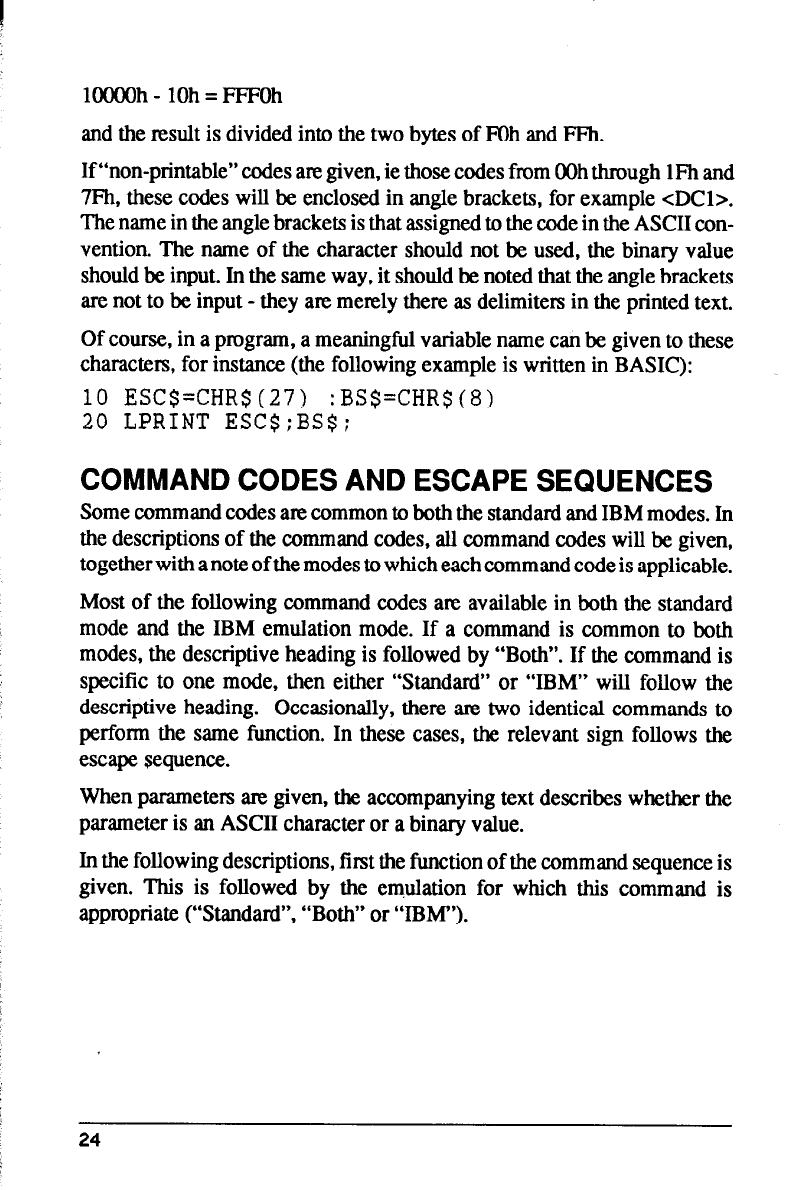
1OOOOh - 1Oh = FFFOh
and the result is divided into the two bytes of FOh and FFh.
If “non-printable” codes are given, ie those codes from OOh through 1Fh and
7Fh, these codes will be enclosed in angle brackets, for example <DCl>.
The name in the angle brackets is that assigned to the code in the ASCII con-
vention. The name of the character should not be used, the binary value
should be input. In the same way, it should be noted that the angle brackets
are not to be input - they are merely there as delimiters in the printed text.
Of course, in a program, a meaningful variable name can be given to these
characters, for instance (the following example is written in BASIC):
10 ESC$=CHR$(27) :BS$=CHR$(8)
20 LPRINT ESC$;BS$;
COMMAND CODES AND ESCAPE SEQUENCES
Some command codes are common to both the standard and IBM modes. In
the descriptions of the command codes, all command codes will be given,
together with a note of the modes to which each command code is applicable.
Most of the following command codes ate available in both the standard
mode and the IBM emulation mode. If a command is common to both
modes, the descriptive heading is followed by “Both”. If the command is
specific to one mode, then either “Standard” or “IBM” will follow the
descriptive heading. Occasionally, there are two identical commands to
perform the same function. In these cases, the relevant sign follows the
escape sequence.
When parameters are given, the accompanying text describes whether the
parameter is an ASCII character or a binary value.
In the following descriptions, first the function of the command sequence is
given. This is followed by the emulation for which this command is
appropriate (“Standard”, “Both” or “IBM”).
24


















